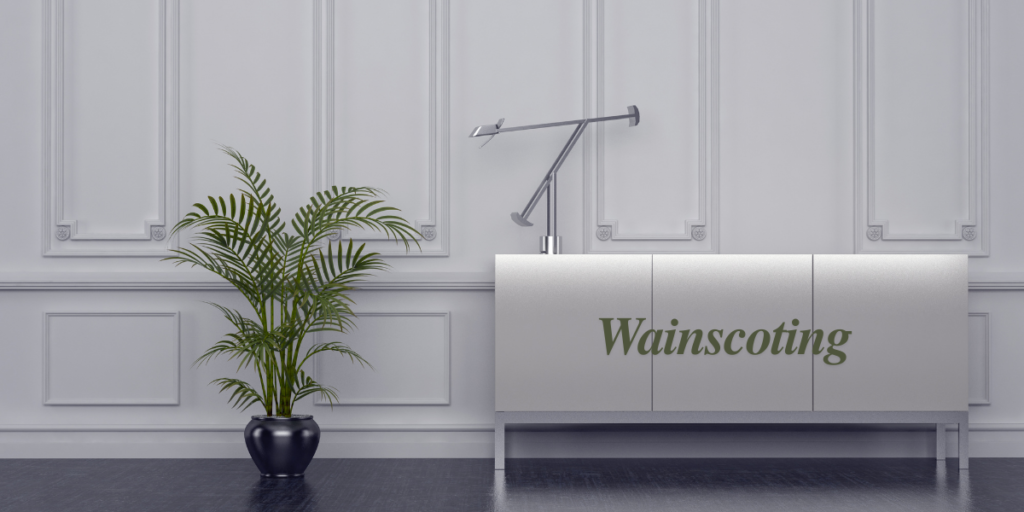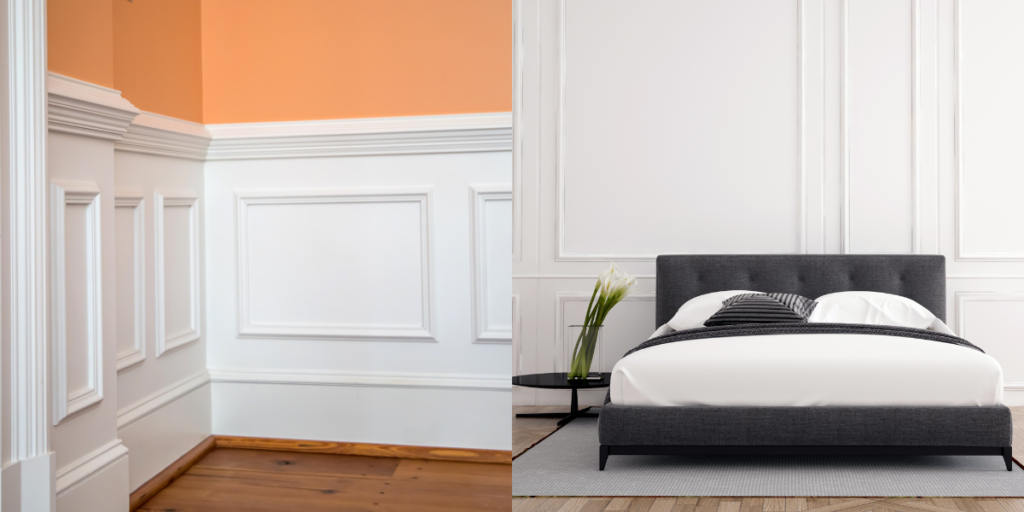The Ultimate Guide to Wainscot: Styles, Benefits, and Design Ideas
Wainscot paneling is a timeless way to add depth, texture, and elegance to interior spaces. Originally used as a protective wall treatment, it has evolved to become a beloved decorative feature in modern homes. This article will guide you through the history, benefits, materials, and styles of wainscot paneling, showing how it can transform your space.
What Exactly is Wainscot and Why is it So Popular?

Wainscot refers to a paneling treatment that typically covers the lower section of a wall, offering both aesthetic appeal and practical benefits. It has been used for centuries to enhance wall surfaces, often extending up about three to four feet. Initially, this paneling was made from high-quality wood and installed in cold, damp stone houses as a form of insulation and protection against wear and tear. Its popularity grew because it not only served a functional purpose but also added a refined, polished look to rooms.
The continued appeal of wainscot today stems from its ability to fit into any style. Whether you have a rustic farmhouse, a sleek modern home, or a stately traditional residence, there is a wainscot style that can elevate your space. It also adds architectural interest and can make rooms feel more structured and cohesive. It works well in almost any room, and its design versatility makes it a favorite among interior designers and homeowners alike.
Is Wainscot Right for Your Home?
Adding wainscot to your home can be a wise choice, but it’s worth considering where it will have the most impact. Think about both your functional needs and your aesthetic goals. In rooms that receive a lot of traffic, like hallways and dining rooms, it can protect walls from scuffs, bumps, and other damage. In bathrooms and kitchens, it provides a protective barrier against moisture and splashes, especially when materials like PVC or tile are used.
From a design perspective, it can bring warmth and richness to large, open spaces, making them feel more inviting. In smaller rooms, opting for a simpler paneling style, like flat panels or beadboard, adds texture without overwhelming the space. This versatility allows homeowners to choose options that enhance both the look and function of their rooms, making it a great addition to any space that needs a boost in character and durability.
Popular Types
Wainscot is available in various styles, each providing a distinct appearance and purpose. Here are some of the most popular options:
- Raised Panel: Often seen in formal settings, raised panel wainscot is characterized by panels that protrude from the wall, creating a dimensional effect. This style is particularly elegant and works well in dining rooms, libraries, and foyers.
- Flat Panel: Featuring smooth panels set within a simple frame, flat panel it is minimalist and modern. It’s a great choice for contemporary interiors, adding subtle texture without overwhelming the space.
- Beadboard: Beadboard wainscot includes narrow, vertical planks with grooves or “beads” between them. This style is ideal for cozy spaces like bathrooms, kitchens, or entryways, where it lends a rustic or cottage-inspired feel.
- Board and Batten: This style consists of wide panels separated by narrow vertical strips, or “battens.” Board and batten wainscotting has a charming, farmhouse aesthetic that is popular in both rural and suburban homes.
Benefits
One of the main benefits of wainscot is its ability to protect walls. In busy households, walls are prone to dents, scratches, and scuffs, especially in high-traffic areas. Wainscot serves as a durable barrier that keeps walls looking pristine. Additionally, it provides insulation, making rooms feel cozier by reducing drafts in older homes. This was one of its original purposes and remains a benefit for those living in cooler climates.
Another advantage of wainscot is its timeless style. It brings a layer of sophistication to any room, creating a more polished and refined aesthetic. From a resale perspective, wainscot can add value by enhancing a home’s overall look, giving it character, depth, and a touch of luxury. Many prospective buyers appreciate homes with architectural details, and wainscot is a relatively easy way to add that appeal.
Materials Used in Wainscot Paneling
While wood is the most traditional material, modern wainscot comes in various options to suit different needs and budgets:
Tile: For a unique and durable option, some homeowners choose tile wainscot. Tile offers a sophisticated look that’s particularly effective in bathrooms and kitchens, where it’s resistant to water and stains.
Wood: Wood paneling is a classic choice, known for its natural beauty and durability. It offers a warm, rich look that’s perfect for traditional or rustic interiors.
MDF (Medium Density Fiberboard): MDF is an affordable and versatile alternative to wood, often used in flat or raised panel designs. It’s easy to paint and finish, making it suitable for custom designs.
PVC (Polyvinyl Chloride): PVC is a water-resistant material ideal for bathrooms, kitchens, or any space where moisture is a concern. It’s durable, easy to maintain, and available in a variety of finishes.
Where to Use Wainscot in Your Home

Wainscot paneling can add charm to many areas in your home, enhancing functionality and style. Here’s how it can transform various rooms:
Kitchen: Tile wainscot is both decorative and practical in kitchens, where it protects walls from splashes and stains, particularly around cooking areas.
Dining Room: Adding raised or flat panel wainscot creates a formal, elegant look in dining areas. This detail pairs well with traditional furnishings and gives the room a refined ambiance.
Hallway or Entryway: Wainscot protects walls in high-traffic areas like hallways, making them easier to clean while adding visual interest.
Bathroom: Beadboard or PVC paneling is a popular choice for bathrooms. It provides moisture resistance and adds a timeless, spa-like feel to the space.
Living Room: In living rooms, wainscot adds warmth and character, especially when paired with elements like built-in bookshelves or a fireplace.
Design Tips for Installation
Here are some tips to make the most of your wainscot paneling:
- Choose the Right Height: Traditionally, wainscot covers the lower third of a wall, but the height can vary based on room proportions and personal preference. Taller paneling creates a stately look, while shorter wainscot is more subtle.
- Consider Color and Finish: White wainscot adds a clean, bright look, while stained wood offers a warm, classic appeal. Painting the panels a darker shade can also add drama and depth.
- Mix with Wallpaper or Paint: Combining wainscot with wallpaper or a contrasting paint color on the upper wall creates a layered, textured look. This is a great way to add interest without overwhelming the room.
- Match the Style of Your Home: Choose a wainscot style that complements the architecture of your home. For instance, raised paneling suits traditional homes, while flat panels or beadboard work well in modern or farmhouse settings.
Conclusion
Wainscot is a versatile and timeless design feature that can bring elegance, character, and protection to any room. Its ability to suit both traditional and modern interiors makes it a popular choice for homeowners seeking to elevate their spaces. With a variety of styles, materials, and design options available, wainscot offers a customized way to enhance your home’s aesthetic and functional appeal.
FAQs
- Can wall paneling work in small spaces?
Yes, simpler designs like flat paneling or beadboard add interest without overwhelming smaller rooms. - Is wainscot paneling a DIY-friendly project?
Many homeowners install beadboard or flat panels as DIY projects, though intricate styles may require professional assistance. - What’s the best material for paneling in a bathroom?
PVC or tile is ideal for moisture-prone areas like bathrooms, as they are resistant to water and humidity. - Does wainscot paneling require frequent maintenance?
Regular dusting and an occasional wipe with a damp cloth are usually sufficient. Wooden panels may need refinishing, while MDF or PVC panels are low-maintenance. - Can I add paneling in a modern-styled home?
Absolutely. Simple flat panels or board and batten designs work well in contemporary spaces, adding architectural interest and depth.






Post Comment